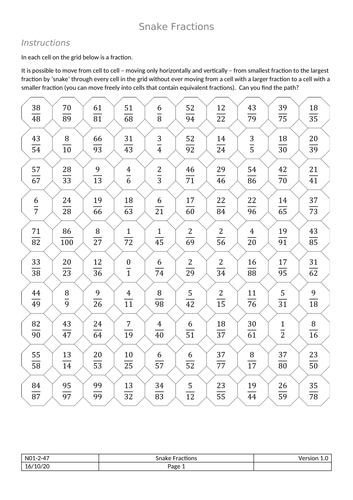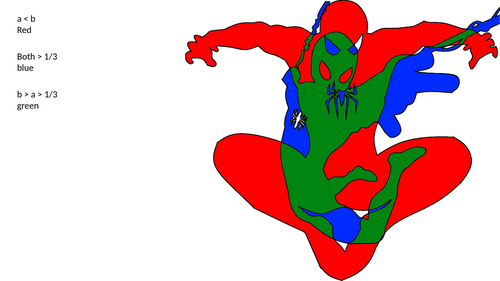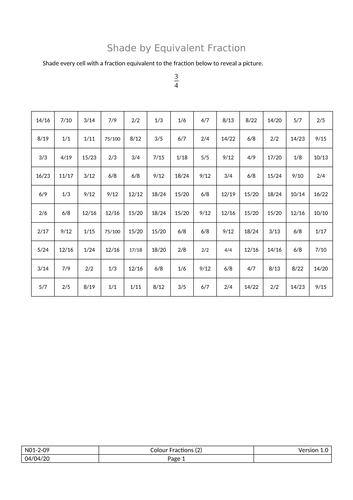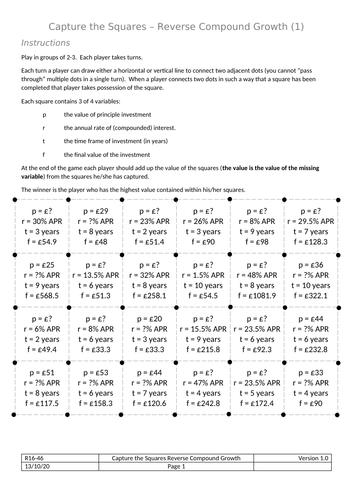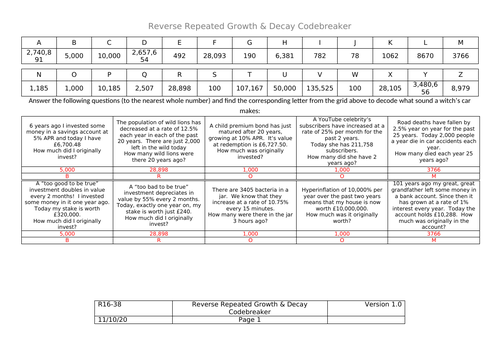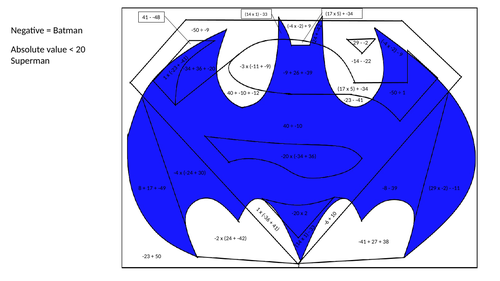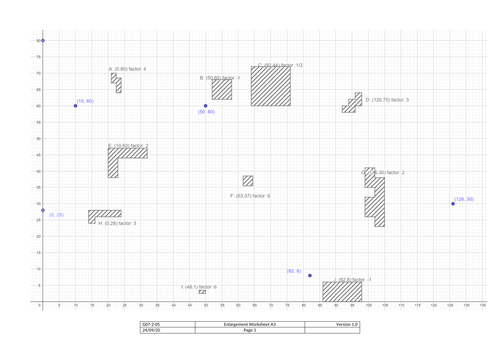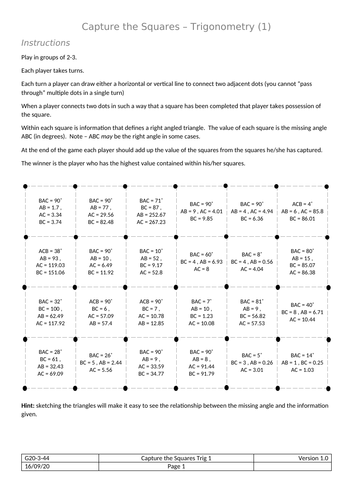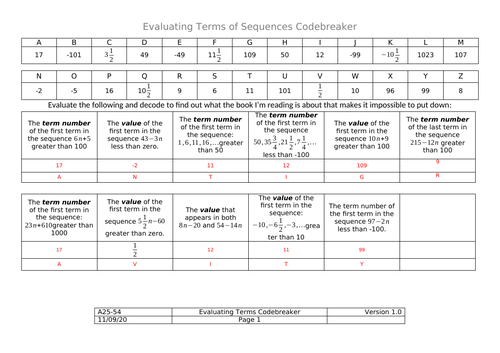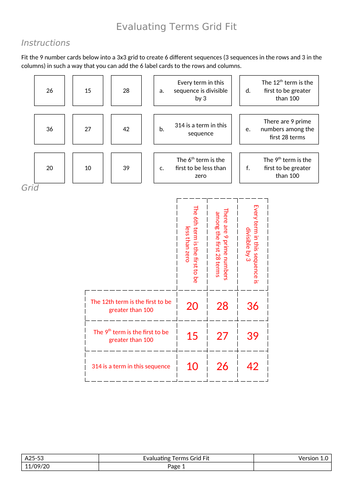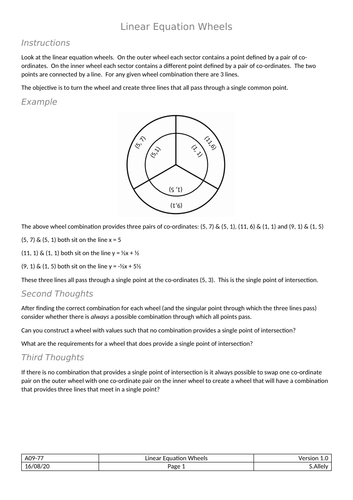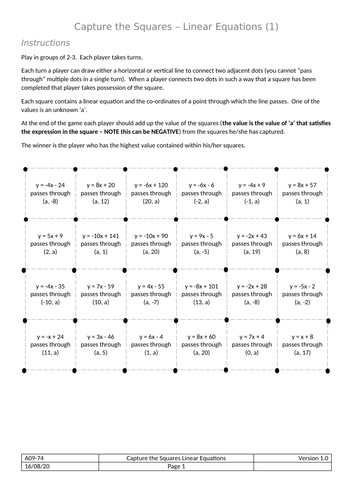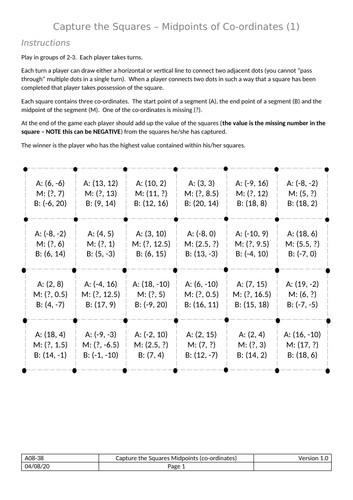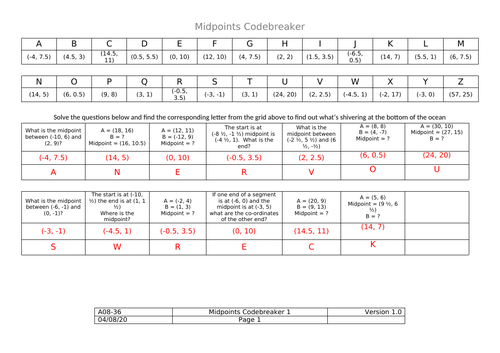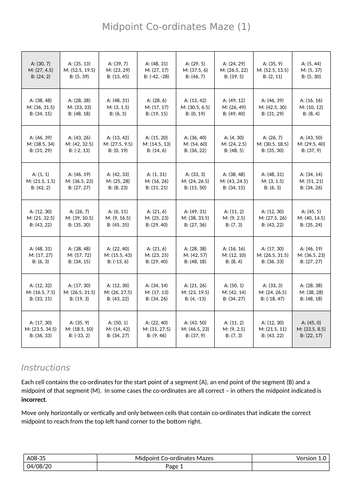
59Uploads
10k+Views
10k+Downloads
All resources

Grid Fit - Fractions
Fit the numbers and labels into the grid in such a way that the row/column labels satisfy all fractions within that row/column.
This is designed as a problem solving task for students who have been taught about comparing fractions and finding equivalent fractions.

Snake Fractions Ordering
“Snake” through a 10x10 grid of fractions from the smallest to the largest (effectively putting all of the fractions in the grid into ascending order).
This is designed as a fluency task with a higher level of challenge. Often fractions that must be compared will have co-prime denominators.

Shade by Ordering/Comparing Fractions
Shade (or don’t shade) the segments of the image based on whether fraction ‘a’ is greater than fraction ‘b’.
This resource also contains a second hidden hidden activity - shade the segments where both fraction ‘a’ and fraction ‘b’ are greater than 1/3.
This is a task intended for lower ability students or for students who are just learning to compare fractions. In each pair the denominators are multiples of each other (there are no co-prime pairs of denominator in any segment) so to compare ‘a’ and ‘b’ only requires one of the fractions to be converted into an equivalent.

Shade by Equivalent Fractions
Shade cells containing a fraction equivalent to the simplest form fractions to reveal a pixel image.
The worksheets become gradually more complex and are a moderately engaging fluency task.
The file names tell you what the image should ultimately show!

Capture the Squares Reverse Compound Interest
Players draw lines to complete squares. Whoever draws the last line captures the square. Each square contains 3 out of; the princpal value, the annual compound interest rate, the investment term and the final value. The “winner” of a square takes the value of the missing variable.
This activity is good for practicing repeated percentage change in a fun and engaging way.
The games become slightly more complex as you go through. Games 5 & 6 allow for annual percentage decay (depreciation).

Codebreaker - Reverse Compound Growth & Decay
A codebreaker in the popular format. Students should reverse the compound interest (repeated percentage growth) or compound decay (repeated percentage decay) and use the answer to decode a joke.
As always, I only create codebreakers when I can’t find one that does exactly the same thing so hopefully someone else out there was looking for one that does what I’ve made this one for.

Codebreaker - Ordering Directed Numbers
A codebreaker in the popular format based around ordering positive and negative numbers (directed numbers). Answering the questions and decoding provides the punchline to a bad joke (it was a freebie).
I’ve found plenty of other codebreakers online for directed numbers but none specifically on the foundational skill of ordering them so hopefully this is of use to someone out there.
There’s plenty of discerning understanding of place value (including decimals) with directed numbers and one question that involves fractions.

Shade by Directed Numbers
Shade (or don’t shade) the segments of the image based on whether the expression within evaluates to a positive or a negative number (directed number).
This resource also contains a second hidden hidden activity - shade the segments where the absolute value of the expression within is less than 20 to reveal a second (different) image).
Expressions are a mixture of addition, subtraction, multiplication and division.

Enlargement - Space Invader
An enlargment (with centre) worksheet. When enlarged the pieces form a “Space Invader”.
All co-ordinates are in the first quadrant. There are a couple of negative unit enlargements. The Geogebra file is included - however - should you wish to move everything to straddle the x & y axis.

Capture the Squares Trigonometry
A series of ‘capture the squares’ games where the square value is the missing angle ABC. Angle ABC can often be determined by sketching the triangles and examining the sketch but it is intended that students use trigonometric ratios - specifically the task is intended to provide fluency work using the tangent ratio - to find the missing angle.
Can be used to consolidate learning or as bell work.

Codebreaker - Evaluating Terms of Sequences
A codebreaker in the popular format. Students should evaluate the first/last term in a sequence to be greater than/less than a given amount etc. to decode the answer to a bad joke (I can’t put my book down because it’s about anti-gravity)
I had found plenty of other codebreakers on similar topics but not one specifically focused on evaluating terms so hopefully this is of use to people!

Grid Fit - Evaluating Terms of Sequences
Fit the numbers and labels into the grid to form 6 different arithmetic sequences that satisfy the labels.
This is designed as a problem solving task for students who have been taught how to evaluate whether a given value is a term within a sequence.

Wheels - Linear Equations between points
Turn the inner wheel to change the combinations of co-ordinates. Each combination of co-ordinates can be used to determine the equation of a straight line. Find the wheel setting that results in three straight lines that intersect at a single point.
I’ve made the resource twice - once designed to be just printed and once where the inner wheels can be cut out and pinned to the outer wheels using paper fasteners (solutions can be found in the “cutting version”)
My main motivation in making this resource was to present a rich problem solving activity for the topic in a visually novel format. There are a couple of extension questions for high ability students to consider.

Capture the Squares Linear Equations
A series of ‘capture the squares’ games where the square value is the missing x or y co-ordinate when the linear equation of y = mx + c is given.
Can be used to consolidate learning, revision or as bell work.
Games start basic and increase gradually in difficulty.
I have published many similar capture the squares games here on TES for other topics. I believe they offer a flexible revision activity.

Capture the Squares Surds
A series of ‘capture the squares’ games where the square value is the integer ‘n’ when the surd has been converted into the form ‘n root 2’ or ‘n root 3’
Can be used to consolidate learning or as bell work.
For both root 2 and root 3 there are two games. One has just mulitplication of surds and the other has addition, division and multiplication of surds by integers.

Wipeout - Big Square Numbers
Based on the old BBC quiz (with Bob Monkhouse). There are some numbers on the board that are (large) square numbers and others that are not (these answers wipeout).
Designed for use as a starter activity or plenary.
This particular Wipeout is a good extension for KS3 students who already have secure basic knowledge of what square numbers are.
I’ve also included the slides in a “matching cards” format that can be cut out and given to students to sort into “true” or “false” on their desks (or in small groups).

Capture the Squares - Midpoints
Players draw lines to complete squares. Whoever draws the last line captures the square. Each square contains co-ordinates for start & end points of a line segment and the co-ordinates of a midpoint. One ordinate value is missing.
The value of each square is the value of the missing number.
This activity is good for practicing fluency in a fun and engaging way.
The first worksheet includes only positive integers for the end points (midpoints can include a half). The second includes some negative integers. The third includes some negative fractional values for the co-ordinates of the start and end points.

Codebreaker - Midpoint coordinates
A codebreaker in the popular format. Students find the midpoint between two co-ordinates (or the end-point of a segment when given the midpoint) and decode to answer the question “what’s shivering at the bottom of the ocean?” (A Nervous Wreck)

Midpoint coordinates Mazes
Move from square to square - only if the co-ordinates correctly indicate the midpoint of a line segment. Find the path through from the top left hand corner to the bottom right.
Incorrect midpoints are designed to highlight several popular misconceptions (e.g. calculating the average within the co-ordinates for A to get the ‘x’ co-ordinate for the midpoint and within the co-ordinates for B to get the ‘y’ co-ordinate for the midpoint, ignoring negative numbers when calculating the average, calculating the difference between the start and end co-ordinates but not adding this to the starting co-ordinates etc.)
The first maze only features co-ordinates in the first quadrant but subsequent mazes feature co-ordinates in all 4 quadrants.

Codebreaker - Prime Factorisation
A codebreaker in the popular format. Students should convert numbers into prime factor index form to decode the answer to a bad joke (I no longer hate facial hair because it grew on me).
I had found plenty of other codebreakers on similar topics but not one specifically on prime factorisation so hopefully this is of use.


